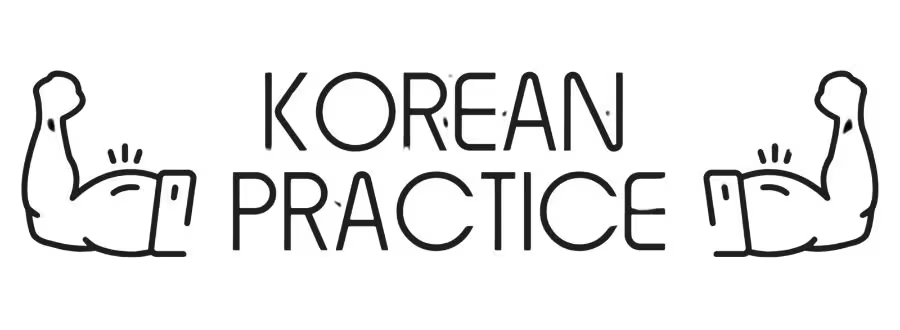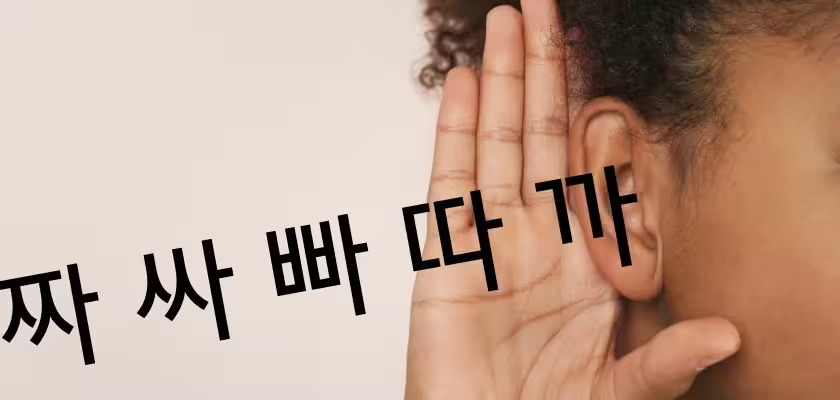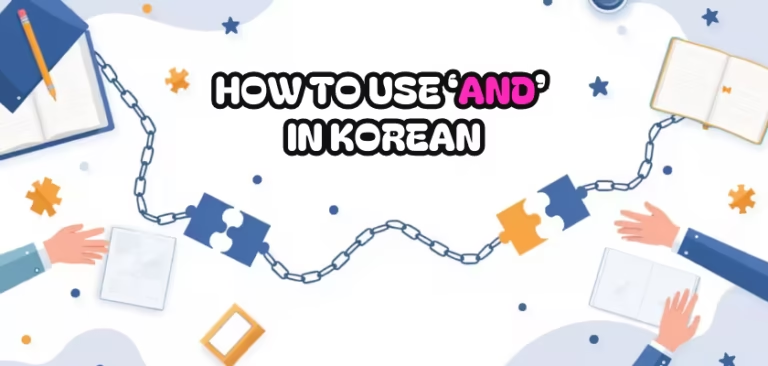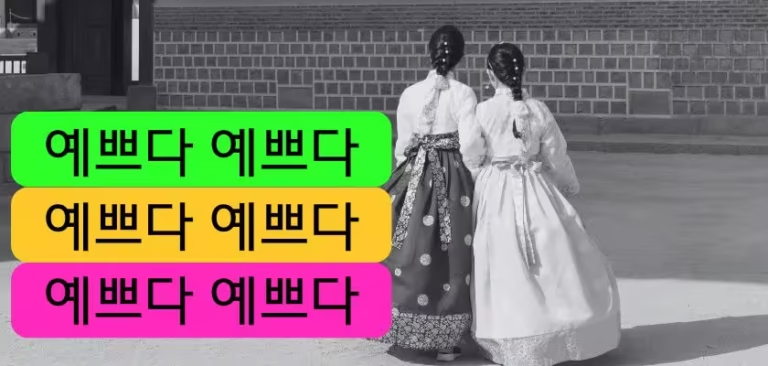Suh ChangWhoon
Written by 서 창훈, a certified Korean teacher with 14+ years of experience in Japan. He previously worked as a government officer, cybersecurity consultant, and English interpreter. Today, he teaches Korean in real classrooms without complex grammar explanations — instead, he trains students’ brains to speak naturally. His unique method is now the foundation of all his Korean courses.
Table of Contents
🔹 Introduction
- Many learners search for how to pronounce Korean double consonants or how to type them, but they often miss the deeper challenge — using them in real speech.
- If you’ve ever tried to say words like 딸기, 짜장면, or 뽀뽀, you’ve already met Korean double consonants — ㄲ, ㄸ, ㅃ, ㅆ, ㅉ.
- These aren’t just “stronger” sounds. They’re tense, made with more pressure in the throat.
They’re tricky, especially if your native language doesn’t have them.
But here’s the truth — even many advanced Korean learners still struggle with them, and that’s okay. - First, let’s learn the basics.
- ▶️ Watch this private video lesson to hear, repeat, and feel the difference.
Korean Double Consonants: Quick Overview
| Double Consonant | Pronunciation Tip | Example |
|---|---|---|
| ㄲ | tense “k” or “gg” | 까치 (magpie) |
| ㄸ | tense “t” or “dd” | 딸기 (strawberry) |
| ㅃ | tense “p” or “bb” | 뽀뽀 (kiss) |
| ㅆ | tense “s” | 쓰다 (to use) |
| ㅉ | tense “j” | 짜다 (to squeeze/salty) |
How to type them:
Just press the same key twice. For example:
ㄲ = ㄱ + ㄱ
ㅃ = ㅂ + ㅂ
📖 Short Story with Korean Double Consonants: 딸기 사러 가자!
A: 뭐 먹고 싶어?
B: 딸기! 딸기 먹고 싶어!
A: 그럼, 딸기 사러 가자!

Example
Original Korean Sentence
뭐 먹고 싶어?
Pronunciation Guide
뭐 (mwo) 먹꼬 (meok-kko) 시퍼? (si-peo)
Meaning and Context
뭐 (what) 먹 (to eat) 고 싶 (want to) 어 (I’m asking you casually)?
English Translation
What do you want to eat?
Literal Translation
What (do you) want to eat?
Example
Original Korean Sentence
딸기! 딸기 먹고 싶어!
Pronunciation Guide
딸기 (ttal-gi)! 딸기 (ttal-gi) 먹꼬 (meok-ggo) 시퍼 (si-peo)!
Meaning and Context
딸기 (Strawberry)! 딸기 (Strawberry) 먹 (to eat) 고 싶 (want to) 어 (I’m telling you casually).
English Translation
Strawberries! I want to eat strawberries!
Literal Translation
Strawberry! (I) want to eat strawberry!
Example
Original Korean Sentence
그럼, 딸기 사러 가자!
Pronunciation Guide
그럼 (geu-reom), 딸기 (ttal-gi) 사러 (sa-reo) 가자 (ga-ja)!
Meaning and Context
그럼 (then), 딸기 (strawberry) 사 (to buy) 러 (in order to) 가 (to go) 자 (let’s; in a casual way)!
English Translation
Then, let’s go buy strawberries!
Literal Translation
Then, let’s go in order to buy strawberry
👨🏫 Want to learn Korean step by step — with full sentence breakdowns, context, and natural examples?
Our story-based Korean course teaches you real language the way it’s actually used — not just grammar charts or vocabulary lists.
Teacher’s Insight: What I’ve Seen Over 14 Years
As a Korean teacher, I’ve taught students from many countries — especially Japan.
And here’s something surprising:
Even though Japanese and Korean share many similar sounds,
most Japanese learners still pronounce double consonants incorrectly — even after 7 or 8 years of study.
Many say “달기 (attaching)” instead of “딸기 (strawberry).” Or “쌀 (rice)” becomes “살 (flesh).”
As a native speaker, I’m always asking myself, “Wait… did they say this? Or that?”
So imagine how much harder it must be for English speakers, who don’t have these tense sounds at all.
The Real Problem Isn’t the Sound — It’s the Silence
The truth is, most learners will never fully master these sounds.
Even advanced speakers — even those who sound fluent — often pronounce them slightly off.
And here’s my honest advice:
Don’t worry about that.
The biggest problem in real conversations is not your pronunciation.
It’s your lack of confidence.
Most learners speak too softly.
They hesitate, whisper, or speak unclearly — not because they don’t know the word, but because they’re scared to say it wrong.
But language isn’t about being perfect.
It’s about being brave.
That’s why I always tell my students:
“Even if you get the pronunciation wrong, say it loud.
Speak like you mean it.
Koreans will understand you through context — not through perfect sounds.”
What’s Next? Practice with Stories, Not Grammar Charts.
If you found this helpful, imagine learning Korean with stories just like this — full of real dialogue, pronunciation tips, cultural insights, and practice exercises.
That’s exactly what I offer in my Korean story courses.
🎧 No memorizing grammar rules.
📖 No overwhelming charts.
Just natural Korean — told through mini-stories you’ll remember.
In a Nutshell
Double consonants like ㄲ, ㅃ, and ㅉ are hard to master — and that’s normal.
The key isn’t perfection, it’s confidence.
A real Korean teacher understands your struggles and helps you speak with power and purpose — not just rules.
So let’s stop whispering Korean.
Let’s say it loud — even if it’s not perfect.
Sign up for my newsletter and get
📖 Korean short stories
🎧 Listening practice with audio
❓ Vocabulary and grammar quizzes
🎁 Free courses
📝 Blog updates
– all delivered straight to your inbox!








